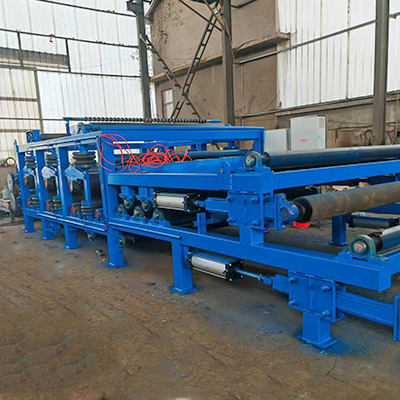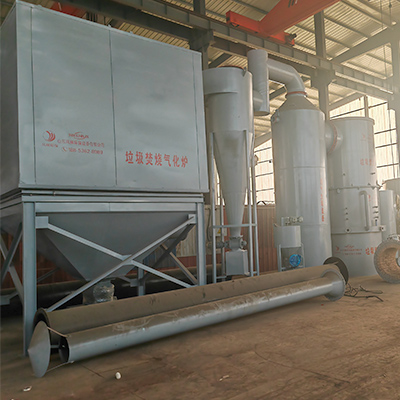Welcome to My Blog! 🌟
I’m so glad you’re here! Before we jump into the exciting content, I’d love for you to connect with me on my social media platforms. It’s where I share extra insights, interact with our amazing community, and post regular updates. Here’s how you can join the conversation:
📘 Facebook: Follow me on Facebook for more updates
Now, let’s dive into the journey ahead. I hope you find everything here both engaging and valuable. Together, let’s explore, learn, and grow! 🚀
Table of Contents
Introduction
In today’s rapidly industrializing world, managing emissions has become a top priority for governments, corporations, and environmental advocates. One of the most critical components in the fight against pollution is industrial waste gas disposal. This process ensures that harmful gases generated during manufacturing, refining, and other industrial processes are treated and managed properly before being released into the environment. However, despite its importance, several misconceptions surround industrial waste gas disposal. These myths can hinder progress, affect compliance with environmental regulations, and put public health at risk. This blog aims to debunk five of the most dangerous myths about industrial waste gas disposal and provide accurate information for responsible and informed decision-making.
Myth 1: Industrial Waste Gas Disposal Is Only Necessary for Large Factories
The Truth About Emissions from Small-Scale Facilities
Many believe that only large industrial plants need to worry about industrial waste gas disposal. However, this is far from the truth. Smaller operations, including workshops, local manufacturing units, and even some service-based facilities, can emit harmful gases like volatile organic compounds (VOCs), nitrogen oxides (NOx), and sulfur dioxide (SO2).
Even in low quantities, these gases can contribute significantly to air pollution when aggregated across numerous small facilities. Neglecting proper gas disposal practices at smaller scales can create localized environmental and health problems. Therefore, all industries, regardless of size, must implement effective industrial waste gas disposal systems to mitigate their environmental impact.
Myth 2: Natural Ventilation Is Enough for Gas Disposal

Why Relying on Natural Airflow Is Ineffective and Risky
SSome operators argue that simply ventilating waste gases into the open air is a sufficient disposal method. This dangerous assumption overlooks the complex chemistry of industrial emissions and the legal frameworks surrounding them.
Natural ventilation lacks the ability to filter, neutralize, or contain harmful pollutants. In fact, this practice can lead to:
- Accumulation of toxic gases in surrounding areas
- Violation of environmental laws
- Health risks to workers and local communities
Industrial waste gas disposal must be performed using engineered systems such as scrubbers, catalytic converters, or thermal oxidizers that are designed to treat specific types of emissions. Relying solely on natural airflow can result in long-term environmental degradation and financial penalties.
In many jurisdictions, environmental protection agencies now mandate the use of scientifically designed treatment systems to meet emission standards. These systems are not just regulatory requirements—they are necessary to protect air quality and human health. Moreover, the notion that fresh air will dilute hazardous compounds is flawed, especially in industrial zones where multiple facilities may emit pollutants simultaneously. Without active treatment, gases may settle in low-lying areas or react with other substances to form secondary pollutants such as smog or acid rain.
Myth 3: Industrial Waste Gas Disposal Technology Is Too Expensive
Exploring Cost-Effective and Scalable Solutions
There is a widespread notion that implementing industrial waste gas disposal technologies is prohibitively expensive. While it is true that some high-end systems require significant capital investment, many cost-effective solutions are available on the market.
Technologies such as activated carbon filters, biofilters, and regenerative thermal oxidizers (RTOs) offer scalable options for different types of facilities. Additionally, many governments provide incentives, grants, and tax breaks to encourage the adoption of emission control technologies.
Investing in proper gas disposal systems also results in long-term savings by reducing legal liabilities, avoiding fines, and enhancing brand reputation. When considered holistically, the cost of inaction far outweighs the initial investment in disposal technology.
Moreover, companies that implement modern emission control systems often discover that they can optimize production processes to generate fewer pollutants in the first place. This operational efficiency leads to resource conservation, lower energy consumption, and reduced raw material waste. Innovative financing options—like leasing or public-private partnerships—also make it easier for smaller firms to adopt advanced disposal technologies without significant upfront costs. In this way, industrial waste gas disposal becomes not a financial burden but a strategic investment.
Myth 4: Emission Levels Are Too Low to Matter
The Cumulative Effect of Low-Level Pollutants
Another dangerous myth is that small emissions are harmless and don’t warrant industrial waste gas disposal. This belief ignores the cumulative effect of continuous low-level emissions, which can have significant environmental and health implications over time.
Low concentrations of pollutants like benzene, formaldehyde, and hydrogen sulfide can build up in the atmosphere, leading to:
- Chronic respiratory diseases
- Ecosystem damage
- Climate change acceleration
Moreover, environmental regulations in many countries now require monitoring and control even for minimal emissions. Ignoring this can lead to non-compliance and serious penalties.
Comparative Table: Low vs. High Emission Impact in Industrial Waste Gas Disposal
| Emission Type | Short-Term Effect | Long-Term Effect | Regulatory Requirement |
|---|---|---|---|
| High-Level Emissions | Acute health issues, legal fines | Environmental contamination, health epidemics | Strict compliance mandatory |
| Low-Level Emissions | Often overlooked | Chronic exposure, air quality deterioration | Increasingly regulated |
| Intermittent Emissions | Unpredictable spikes | Data inaccuracy, harder to track and control | Requires continuous monitoring |
Myth 5: Compliance Means Safe Disposal

Why Legal Compliance Is Just the Beginning
Many companies assume that meeting minimum legal standards is sufficient for safe industrial waste gas disposal. While compliance is crucial, it does not always equate to environmental safety or sustainability.
Regulations often lag behind scientific discoveries. What is considered “acceptable” today might be reclassified as hazardous tomorrow. Therefore, best practices in industrial waste gas disposal go beyond mere compliance. They involve:
- Continuous monitoring and reporting
- Updating equipment and procedures
- Staff training and emergency preparedness
Adopting a proactive approach not only protects the environment but also positions the company as a responsible industry leader.
Conclusion
Dispelling myths about industrial waste gas disposal is critical to ensuring environmental protection, regulatory compliance, and community health. Believing in these misconceptions can lead to poor decision-making, increased operational risks, and long-term costs.
Understanding the importance of industrial waste gas disposal at all levels of production, recognizing the limitations of natural ventilation, appreciating the affordability of modern technologies, and going beyond compliance are essential steps toward responsible industrial practices.
The more industries embrace accurate knowledge and proactive strategies, the better the outcomes will be for both the environment and business operations. Don’t let outdated assumptions dictate your approach to emission management. Stay informed, stay compliant, and strive for sustainability.
FAQ
What is industrial waste gas disposal?
Industrial waste gas disposal refers to the process of treating and managing harmful gases produced during industrial activities before releasing them into the atmosphere.
Are small businesses required to implement gas disposal systems?
Yes, even small-scale facilities can emit harmful gases and may be subject to local environmental regulations requiring proper disposal methods.
What technologies are used in industrial waste gas disposal?
Common technologies include activated carbon filters, thermal oxidizers, catalytic converters, and scrubbers, each designed for specific pollutants.
Can natural ventilation replace disposal systems?
No, natural ventilation does not filter or neutralize harmful substances and is generally ineffective and non-compliant with regulations.
How can companies afford gas disposal systems?
Many cost-effective and scalable solutions are available, and government incentives often reduce the financial burden of adopting these technologies.
Does legal compliance guarantee environmental safety?
Not necessarily. Regulations may not cover all pollutants or the latest scientific findings. Best practices often go beyond compliance.
How often should gas disposal systems be maintained?
Routine maintenance is essential and should be conducted according to the manufacturer’s recommendations and regulatory requirements.
What are the risks of neglecting industrial waste gas disposal?
Risks include legal penalties, health hazards, environmental damage, and reputational loss for the company.
Can emissions be monitored in real time?
Yes, modern systems often include real-time monitoring and data logging to ensure continuous compliance and early detection of issues.
Why is public awareness important in industrial waste gas disposal?
Informed communities can hold industries accountable, support better regulations, and advocate for cleaner and safer environments.






